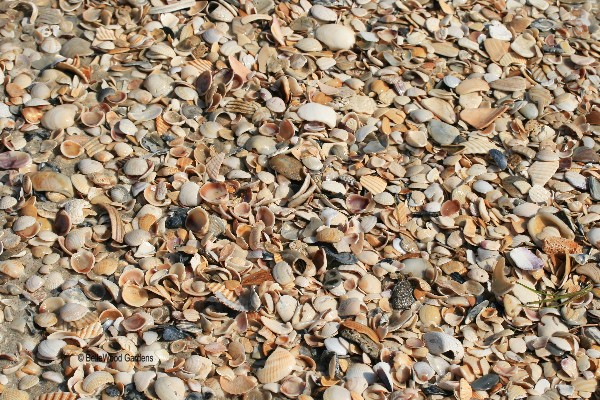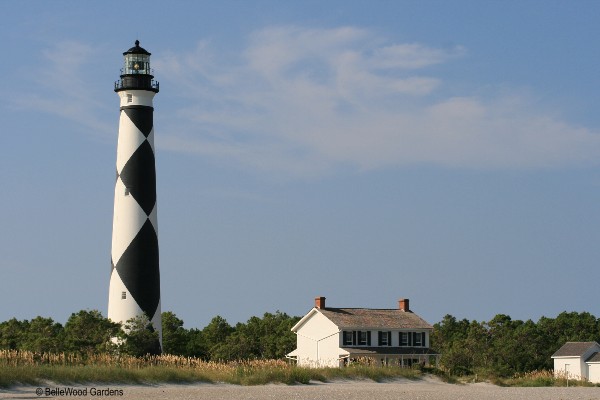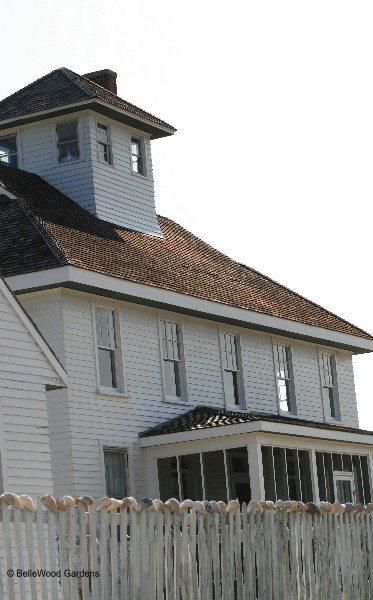
One day we drove to New Berne, to visit Governor Tryon's Palace. (More about that later.) My focus was, of course, on the gardens. In the Mary Kistler Stoney Flower Garden on Pollack Street, the paths were surfaced with oyster shells.

We know what to do with oysters - eat them. Raw on the half shell, in bisques and soups and stews, as fried oysters, in oyster stuffing for poultry. Well, back in 1769, when the Palace was under construction, oysters were also popular. But then, as now, after they're eaten arises the issue of what to do with the shells. The settlers crushed them and used oyster shells for paving roads and paths, burned them for lime, used oyster shells as fill for wharves and lowlands.

Native Americans who lived in coastal areas were eating oysters before the colonists arrived. They dumped the shells back into the sea, making huge jetties of oyster shells. It turns out that this is, ecologically speaking, a very good idea. Oysters start off as microscopic spawn, swimming and drifting with the tidal currents for about three weeks, feeding on plankton and in turn, being fed on. (Since during the four to six week spawning season each female oyster produces 500 million eggs the extremely high mortality rate is not necessarily a bad thing. Only a small fraction of 1 percent of the young larvae reaches the next stage of development.) When the survivors reach the size of a grain of pepper, each larva seeks a suitable, clean, hard surface on which to attach. The little oyster turns on its left side, cements itself to the object, and remains immobile for the rest of its life.
In commercial oyster farming today, the material put out for oysters to attach to is called cuitch, and the process of becoming cemented to the cuitch is termed setting or spatting. After setting, young oysters are named seed or spat. While oyster larvae will attach themselves to many types of cuitch they seem to prefer mollusk shells and materials which contain chalky substances. The best surface for them is oyster shell. The North Carolina Division of Marine Fisheries collects used shells for recycling, dumping clean clam and / or oyster shells by the barge-load to create shell reefs in coastal waters
It is still an old island tradition to use oyster shells for paths and driveways, and as garden borders.







